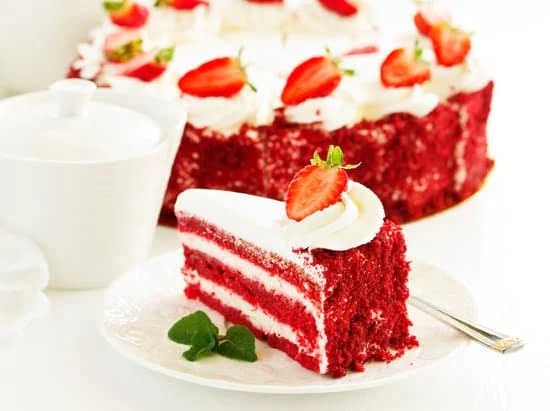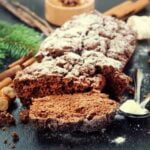Are you looking to elevate your baking skills and create stunning, professional-looking cakes? Look no further than the art of icing for cake decoration. Icing is not just a delicious addition to your baked goods; it can also be used to create intricate designs, add texture, and bring your cakes to life. Whether you are a novice baker or a seasoned pro, mastering the art of cake icing is essential for creating show-stopping desserts.
When it comes to decorating cakes, there are various types of icing to choose from, each offering unique textures and flavors. From creamy buttercream to smooth fondant and delicate royal icing, the possibilities for cake decoration are endless. In this article, we will explore the different types of icing available, how to select the right one for your specific needs, and share tips and techniques for applying icing to your cakes with precision.
Understanding which type of icing is best suited for different cake designs and themes is crucial in achieving professional-looking results. Factors such as the climate, desired texture, flavor compatibility with the cake, and design complexity all play a role in selecting the ideal icing for your creation.
By considering these factors and understanding how they impact the outcome, you can ensure that your cake not only looks visually appealing but tastes delicious as well. So let’s dive into the world of cake icing and uncover the secrets to creating beautiful edible works of art.
Different Types of Icing for Cake Decoration
Buttercream, fondant, and royal icing are the three main types of icing used for cake decoration. Each type has its own unique characteristics and is suitable for different purposes. Buttercream is a popular choice due to its creamy texture and ability to hold intricate designs.
Fondant, on the other hand, provides a smooth and flawless finish that is perfect for creating elaborate decorations. Royal icing is known for its hard, glossy finish that makes it ideal for piped decorations and intricate details.
When choosing the right icing for your cake, there are several factors to consider. The type of cake you are decorating, the design you have in mind, and the weather conditions all play a role in determining which type of icing will work best. For example, buttercream is perfect for creating soft textures and delicate designs on a cake, while fondant is great for sculpting 3D decorations and achieving a polished look.
In addition to the type of icing, it’s important to consider the flavor and color of the icing as well. Buttercream can be flavored with various extracts and colors, making it a versatile option for customization.
Fondant can also be tinted with food coloring to achieve vibrant hues and can be infused with different flavors. Royal icing tends to have a sweet flavor due to its main ingredients – confectioners’ sugar and egg whites – but can also be flavored with extracts or oils.
Choosing the Right Icing for Your Cake
When it comes to choosing the right icing for cake decoration, there are several factors that should be taken into consideration. The type of icing you select will greatly depend on the specific needs of your cake, as well as your own personal preferences and skill level. Here are some important factors to think about when deciding which type of icing to use for your cake decoration project.
Cake Type and Flavor
One crucial factor to consider when choosing the right icing for your cake is the type and flavor of the cake itself. For example, a light and fluffy sponge cake may pair well with a delicate buttercream icing, while a rich chocolate cake would be better complemented by a smooth and decadent ganache. It’s important to choose an icing that not only suits the texture of your cake but also enhances its flavor.
Climate and Weather Conditions
Another important consideration when selecting an icing for cake decoration is the climate and weather conditions in which the cake will be displayed or served. In hot and humid weather, certain types of icing, such as buttercream, may soften or melt more easily, making them less suitable for outdoor events or warm indoor settings. Fondant or royal icing, on the other hand, tend to hold up better in these conditions due to their firmer texture.
Decorating Techniques
The techniques you plan to use for decorating your cake can also play a role in determining which type of icing is best suited for your project. For intricate designs and sculpted decorations, fondant may be the most appropriate choice due to its malleable nature and ability to hold intricate shapes.
On the other hand, if you plan on using piping techniques or creating textured effects, buttercream or royal icing might be more suitable options due to their versatility in terms of consistency and ease of manipulation.
By carefully considering these factors – including Cake Type and Flavor, Climate and Weather Conditions, as well as Decorating Techniques – you can make an informed decision when choosing the right icing for your next cake decoration project. Whether you opt for buttercream, fondant, royal icing or a combination thereof will ultimately depend on what best serves the needs of your unique creation.
Tips and Techniques for Applying Icing to Your Cake
When it comes to applying icing for cake decoration, there are various tips and techniques that can help you achieve a professional and visually appealing result. One important aspect to consider is the type of icing you are using. For buttercream icing, it’s essential to use an offset spatula to spread the icing evenly on the cake’s surface.
A turntable can also be useful to ensure a smooth application. For fondant icing, rolling it out on a clean, powdered surface and then carefully draping it over the cake can create a flawless finish.
Another important tip is to crumb coat your cake before applying the final layer of icing. A crumb coat is a thin layer of icing that seals in any loose crumbs, preventing them from showing through the final layer of icing. This step is crucial for achieving a clean and professional look.
In addition to these techniques, incorporating texture and patterns into your cake design can elevate its visual appeal. This can be achieved by using piping bags with different tips to create intricate designs or by using stencils for more precise patterns. It’s important to practice these techniques and experiment with different tools to find what works best for your desired result.
| Tips and Techniques | Application |
|---|---|
| Use a turntable | For even application of buttercream icing |
| Crumb coat | To seal in loose crumbs before applying final layer of icing |
| Incorporate texture and patterns | Using piping bags with different tips or stencils for intricate designs |
Icing for Cake Decoration
When it comes to icing for cake decoration, the design possibilities are endless. Whether you’re a beginner baker or an experienced cake decorator, finding inspiration for your next creation is key to creating a stunning and unique cake. Here are some design ideas and inspiration to help you take your cake decorating skills to the next level:
- Themed Cakes: Consider creating themed cakes for special occasions such as birthdays, weddings, or holidays. For example, a floral-themed cake for a spring wedding or a spooky Halloween cake with cobwebs and spiders.
- Texture Play: Experiment with different textures using icing. You can create a rustic look with buttercream ruffles, smooth fondant surfaces, or intricate royal icing piping.
- Color Palette: Think about the color scheme for your cake and how it can complement the overall design. You can draw inspiration from nature, fashion trends, or even art movements.
Furthermore, drawing inspiration from other forms of art can also elevate your cake decorating game. For example:
- Painting: Take cues from famous paintings and use icing to recreate them on your cakes. This could be anything from Van Gogh’s Starry Night to Monet’s Water Lilies.
- Architecture: Look at architectural marvels from around the world for inspiration. From intricate lace-like designs found in gothic cathedrals to the clean lines of modern skyscrapers, there is plenty of room for creativity.
- Fashion: Take a cue from haute couture fashion designs and translate them onto your cakes with details like lace patterns or metallic accents.
By exploring various sources of inspiration and incorporating different design ideas into your cake decorating process, you can truly make the most of icing for cake decoration and create edible works of art that will impress every time.
Common Mistakes to Avoid When Working With Icing for Cake Decoration
When working with icing for cake decoration, there are common mistakes that can easily be avoided with the right techniques and knowledge. Here are some of the most common mistakes to watch out for:
1. Overmixing the icing: Overmixing buttercream or royal icing can lead to a runny or separated consistency, making it difficult to work with. It’s important to mix the icing just enough to achieve a smooth and creamy texture without overdoing it.
2. Not properly preparing the cake: Before applying any type of icing, it’s crucial to ensure that the cake layers are leveled and properly cooled. Failing to do so can result in uneven application and a lopsided final product.
3. Using the wrong type of icing for the design: Different types of icing have different consistencies and purposes. For intricate designs and decorations, fondant is often a better choice due to its smooth and pliable nature, while buttercream works best for simple piping and frosting.
By being mindful of these common mistakes, you can elevate your cake decorating skills and create stunning edible art using icing for cake decoration.
Using Icing for Cake Decoration to Create Edible Art
Using icing for cake decoration is not just about making a tasty treat, but also about creating edible art. With the right tools and techniques, you can transform a simple cake into a masterpiece that will impress your guests and leave them in awe of your creativity.
Choosing the Right Design
When using icing for cake decoration to create edible art, it’s important to start with a clear vision of the design you want to achieve. Whether it’s intricate piping work, delicate fondant flowers, or a bold abstract design, having a clear plan will help guide you as you work on your cake.
Utilizing Different Icing Techniques
To create edible art with icing, it’s essential to master different techniques such as piping, flooding, and painting with icing. Each technique offers unique possibilities for creating stunning designs on your cake. Experimenting with different tools and methods will help you find your own style and make your cakes stand out.
Seeking Inspiration
Sometimes the best way to create edible art with icing is by seeking inspiration from other sources. Look for ideas in nature, fashion, art, and even architecture – anything that catches your eye can be translated into a beautiful design on your cake. Remember that the possibilities are endless when it comes to using icing for cake decoration to create edible art.
Conclusion
In conclusion, the art of cake decoration with icing is a wonderful and creative way to elevate your baking skills and make your desserts truly special. From buttercream to fondant to royal icing, there are a variety of options to choose from when it comes to selecting the right type of icing for your cake. Considering factors such as flavor, texture, and design possibilities can help you make an informed decision.
When applying the icing to your cake, it’s important to use the proper tips and techniques to achieve a smooth and professional-looking finish. Whether you’re spreading buttercream with a spatula or rolling out fondant for a sleek surface, practice and patience are key in mastering these skills. Additionally, finding design inspiration and exploring new ideas can help you take your cake decorating abilities to the next level.
While working with icing for cake decoration can be delightful, it’s not without its challenges. Common mistakes such as overmixing buttercream or rolling out fondant too thin can impact the finished product. However, learning from these missteps and seeking ways to improve will ultimately lead to greater success in creating edible works of art.
In essence, embracing the creativity and versatility of icing for cake decoration opens up endless opportunities for expression in the world of baking. By experimenting with different types of icing, honing your application techniques, seeking inspiration for designs, and learning from mistakes, you can truly make the most out of this delightful form of edible artistry.
Frequently Asked Questions
What Is the Best Icing to Use for Cake Decorating?
The best icing to use for cake decorating depends on the desired outcome. Buttercream is popular for its versatility and ability to hold its shape, while fondant provides a smooth, polished finish.
What Are the 7 Types of Icing?
The seven types of icing include buttercream, royal icing, fondant, ganache, glaze, cream cheese icing, and meringue buttercream. Each type offers different textures and flavors for various cake decorating needs.
What Is the Difference Between Frosting and Icing?
The main difference between frosting and icing lies in their ingredients and consistency. Frosting tends to be thick and creamy, often made with butter or shortening, while icing is thinner and more liquid in form. They are used interchangeably for cake decorating purposes but have distinct differences in texture and taste.

Welcome to our cake decorating blog! My name is Destiny Flores, and I am the proud owner of a cake decorating business named Cake Karma. Our mission is to provide delicious, beautiful cakes for all occasions. We specialize in creating custom cakes that are tailored specifically to each customer’s individual needs and tastes.





